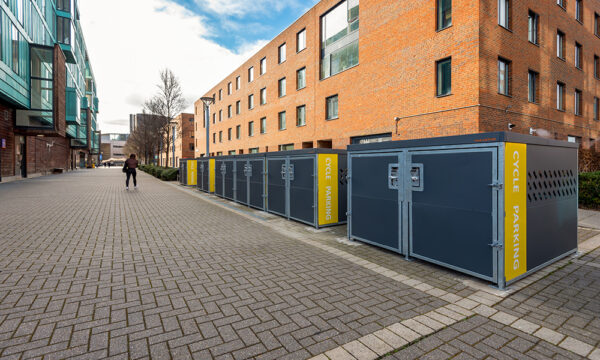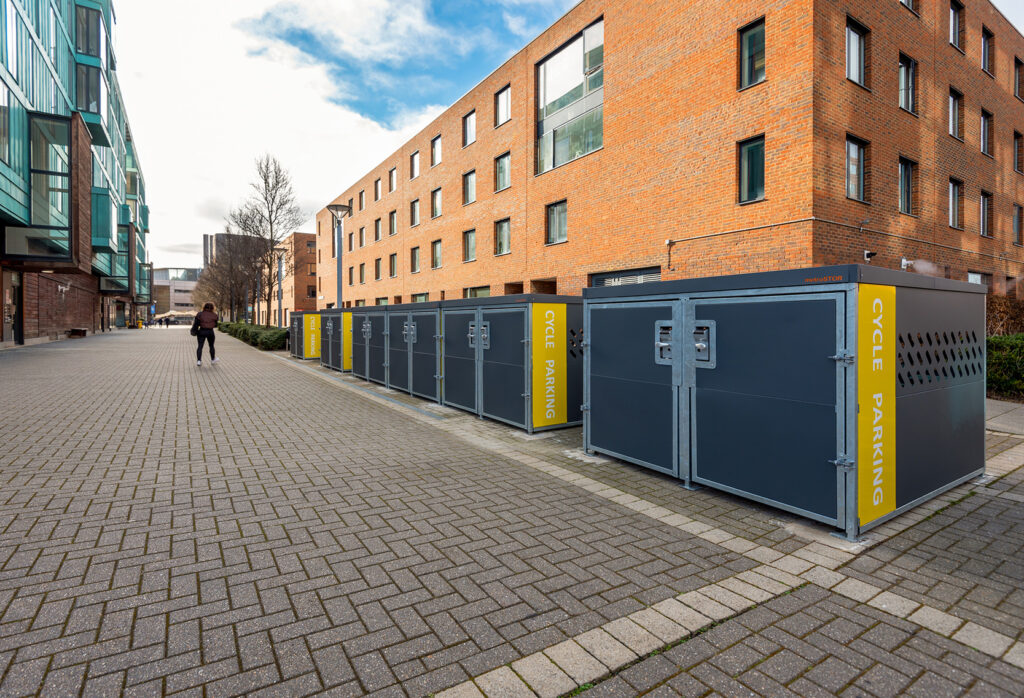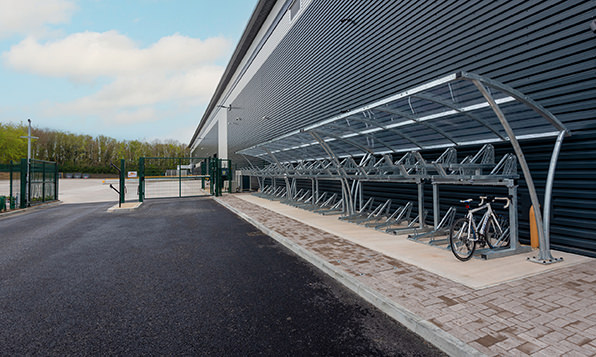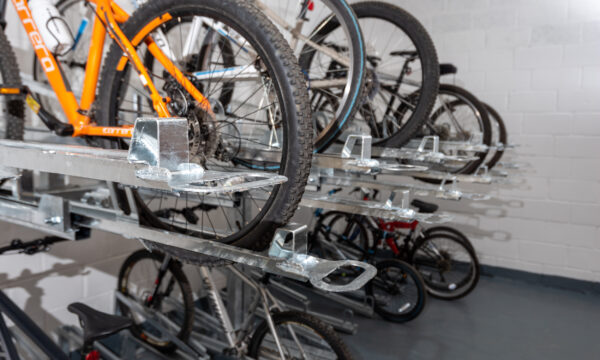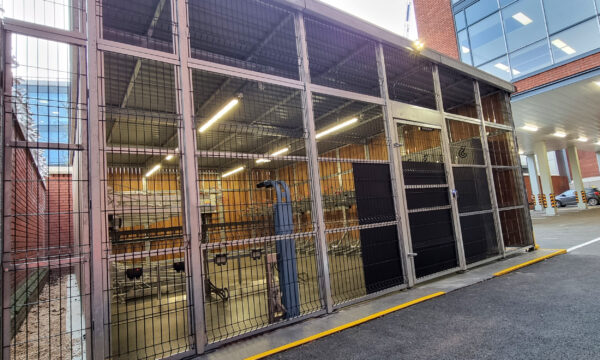In London, around 50 bikes are reported stolen every day. The actual figure, taking into account incidents not reported to the police, is likely to be even higher. Close to 20,000 bikes are stolen every year in the capital, as thousands of residents continue to wait for secure bike storage.
Following on from their successful #ThisIsAwkward campaign in 2022, charity campaign group Clean Cities, working in collaboration with Stolen Ride, has called on residents in London to share their stories of bike theft and the impact this has had on them. The #StolenDreams campaign has seen 1,000 missing bike posters, known as ‘lamppost laments’, placed across the Capital as part of an increasing demand for secure bike storage facilities.
urbanspec takes a look at the challenges faced by city residents when there is a lack of access to secure bike storage, particularly for those living in flats and apartment buildings, and how the demand for these resources can help restrict the development of large-scale bike theft currently affecting urban cyclists.
Secure Bike Storage for City Residents
A cyclist’s journey invariably begins and ends at home. For many residents in flats and apartment buildings, parking their bike at home currently means carrying it up flights of stairs or storing it inconveniently on a balcony or in communal living spaces, which can then compromise fire safety guidelines. This is an impractical solution, and is particularly an issue for residents living in older flats or high-rise buildings, where space is at a premium.
For cycling to become a convenient, sustainable travel alternative for city residents in flats and apartment buildings, providing secure, on-street cycle parking in residential areas is crucial. It’s worth noting that the provision of on-street bike parking is typically a more efficient use of limited urban space than car parking, with one parking space providing the necessary dimensions for storing several bikes, while semi-vertical and two-tier racking systems are designed specifically to maximise space in high-density settings.
A lack of secure bike parking and storage facilities, however, has ultimately allowed bike theft to develop significantly in our urban settings. For the perpetrators, bike theft presents a low-risk, high-reward crime, however, it is rarely victimless. Many city residents rely on their bikes for travel and the resulting impact of a theft can be debilitating. In cities like London and Brighton, the resulting conviction rates from these incidents are troubling.
Bike Theft Statistics
Between June 2021 and July 2022, almost 90% of bike thefts reported to the police in England and Wales were closed without a perpetrator convicted. Of the 74,421 bike thefts reported during this time period, no suspect was even identified in 66,769 of the cases.
Brighton is another city with a significant bike theft issue. No convictions were made across 2023 despite 798 bikes being reported stolen. Sussex Police were unable to find a suspect for 92% of the cases. Cycling campaign group Bricycles claim the lack of secure bike parking, particularly in the city centre, is acting as a direct deterrent to cycling uptake.
When a suspect is identified by police in the UK, prosecution is often challenging for a number of reasons, including victims not supporting the investigation or difficulties gathering evidence, such as eye witness accounts and CCTV. However, a number of the incidents have occurred in broad daylight in high traffic areas, underscoring the need for secure bike storage as a preventative solution.
The Demand for Secure Bike Storage
Utilising limited kerbside space efficiently, bike hangars have emerged in recent years as an innovative solution for residential streets, replacing a single car parking space with up to 6 bike parking spaces per hangar. In their Cycle Parking Implementation Plan, Transport for London (TfL) claimed that more than 50% of Londoners regard the lack of secure bike parking as a key deterrent to cycling, and a core aspect of their plan is to supply more cycle hangars across the Capital. Close to 1,200 units have been provided in over 25 boroughs, however, close to 9000 Londoners remain on borough waiting lists.
It’s estimated that London’s total bike storage provision will nearly double to 70,000 by May 2026, however, Clean Cities claim at least 35,000 residents across London’s 21 boroughs are likely to remain on a waiting list by the same year. There has been suggestions of a lack of parity for residents regarding both provision and annual cost of a hangar spot. At £107.25, the cost for a space in a bike hangar is double that of the London average (£54).
Residents are advised by TfL to check their local council website to request a unit near their home. The units are installed on-street and purchased by local councils from suppliers. Evidence of demand is often required when evaluating new requests, however, there are other determining factors in play, such as the availability of suitable on-street space.
Secure Bike Storage with urbanspec
For public bike parking in the UK, an outline of the requirements can be found in The Standards for Public Cycle Parking guide. Details on secure bike storage for residential settings can also be found in urbanspec’s article.
With a product line that covers bike modules, lockers, stores and hub buildings, secure bike storage solutions from urbanspec combine volume manufacture with custom build capability through an integrated design and engineering methodology.
Ideal for existing residential and new-build settings, our versatile formats for secure bike storage offer efficient footprint utilisation when available space is at a premium, enabling broad capacity opportunities for a variety of bike parking formats, all within a secure covered structure. Modularity in design offers opportunities to form a series of connected units, reducing the required footprint by enclosing only the bike rack space.
Access control options are accommodated within a high-quality steel door and frame design, enabling a uniform mode of access for residents. Central to urbanspec product design, designs can be easily configured to be Secure By Design compliant or incorporated into planning applications to achieve BREEAM performance requirements, enabling cycling facilities to be considered from the earliest stages of development.
A substantial resource and knowledge base enables urbanspec to simplify specifications, utilising CAD models, NBS specifications and datasheets available for download. Supporting CPD programmes provide clarity on the optimal approach to aspects such as security considerations and effective space planning.
